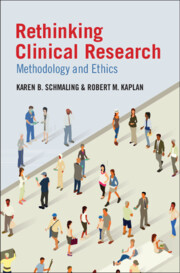Book contents
- Rethinking Clinical Research
- Rethinking Clinical Research
- Copyright page
- Contents
- Acknowledgments
- Introduction
- Part I Fundamentals
- Part II Rethinking Research
- Part III Case Studies
- 13 Case Study: Treating Gastroesophageal Reflux Disease with Omeprazole
- 14 Case Study: Statin Therapy for Primary Prevention of Heart Disease
- 15 Case Study: Cancer Screening
- 16 Case Study: Antidepressant Medications
- Conclusions and Recommendations
- Index
- References
14 - Case Study: Statin Therapy for Primary Prevention of Heart Disease
from Part III - Case Studies
Published online by Cambridge University Press: 13 March 2025
- Rethinking Clinical Research
- Rethinking Clinical Research
- Copyright page
- Contents
- Acknowledgments
- Introduction
- Part I Fundamentals
- Part II Rethinking Research
- Part III Case Studies
- 13 Case Study: Treating Gastroesophageal Reflux Disease with Omeprazole
- 14 Case Study: Statin Therapy for Primary Prevention of Heart Disease
- 15 Case Study: Cancer Screening
- 16 Case Study: Antidepressant Medications
- Conclusions and Recommendations
- Index
- References
Summary
HMG-CoA reductase inhibitors, also known as statin medications, are used to reduce cholesterol levels in efforts to prevent heart attacks and strokes. Extensive evidence justifies the use of statins. As an exercise, we take a skeptical look at the evidence and raise concerns about the consistency, patient-centeredness, and potency of benefit. Much of the justification for statins focuses on LDL cholesterol as a surrogate for heart disease. Only one major clinical trial has demonstrated that statins (versus placebos) result in longer life expectancy. Subject populations evaluated in statin trials tend to be highly selected. Older adults, a group that almost universally uses the medications, have been studied only rarely. Assuming that lower LDL levels reflect better health, a recent campaign promotes lowering LDL cholesterol values to below 50 mg/dl. The campaign is based on the assumption that the relationship between LDL cholesterol and mortality is linear. Inspection of the data reveals that the relationship is log linear; there is more benefit for initiating treatment among people who are initially at high LDL levels in comparison with those who are initially at lower risk.
Keywords
- Type
- Chapter
- Information
- Rethinking Clinical ResearchMethodology and Ethics, pp. 273 - 292Publisher: Cambridge University PressPrint publication year: 2025

